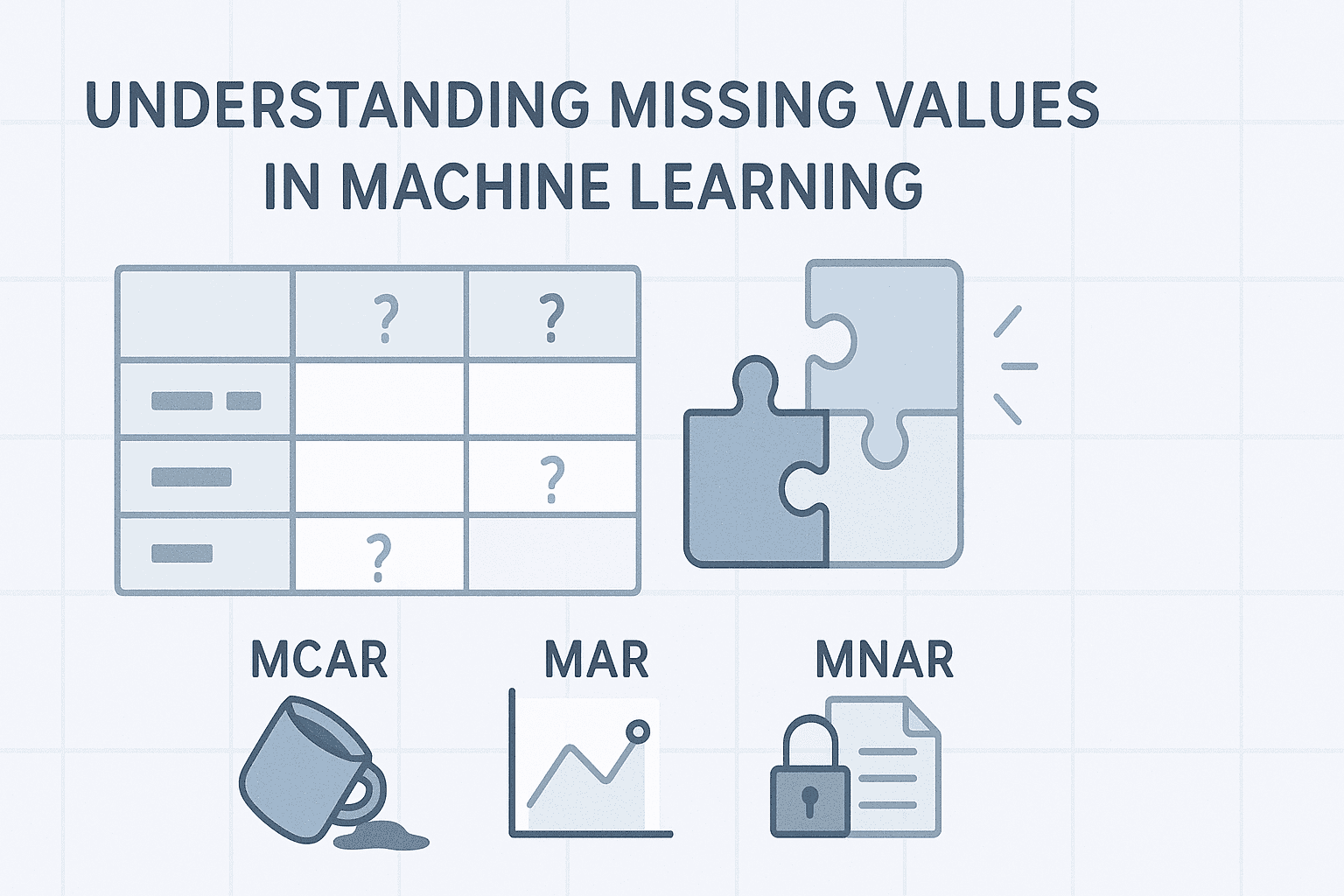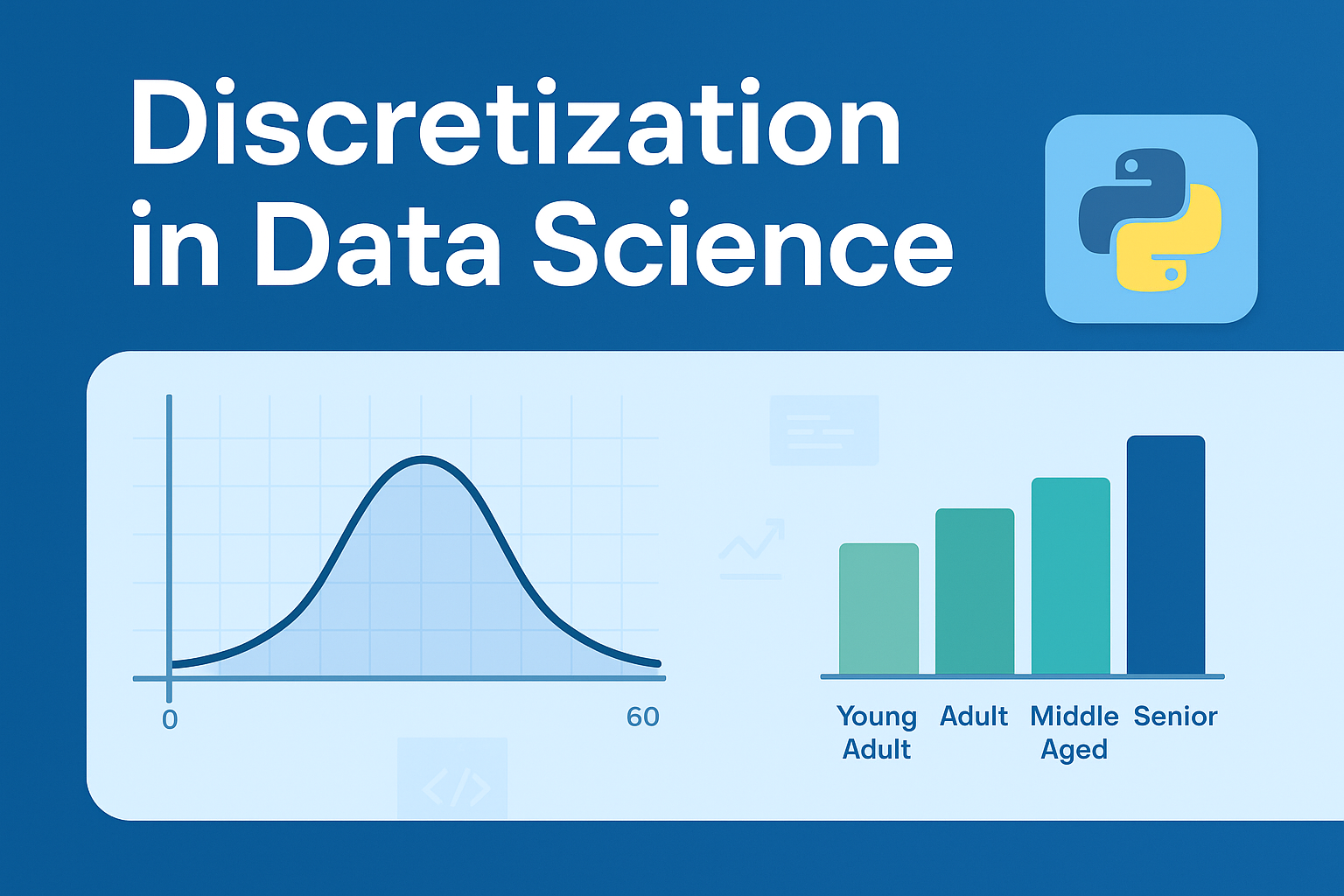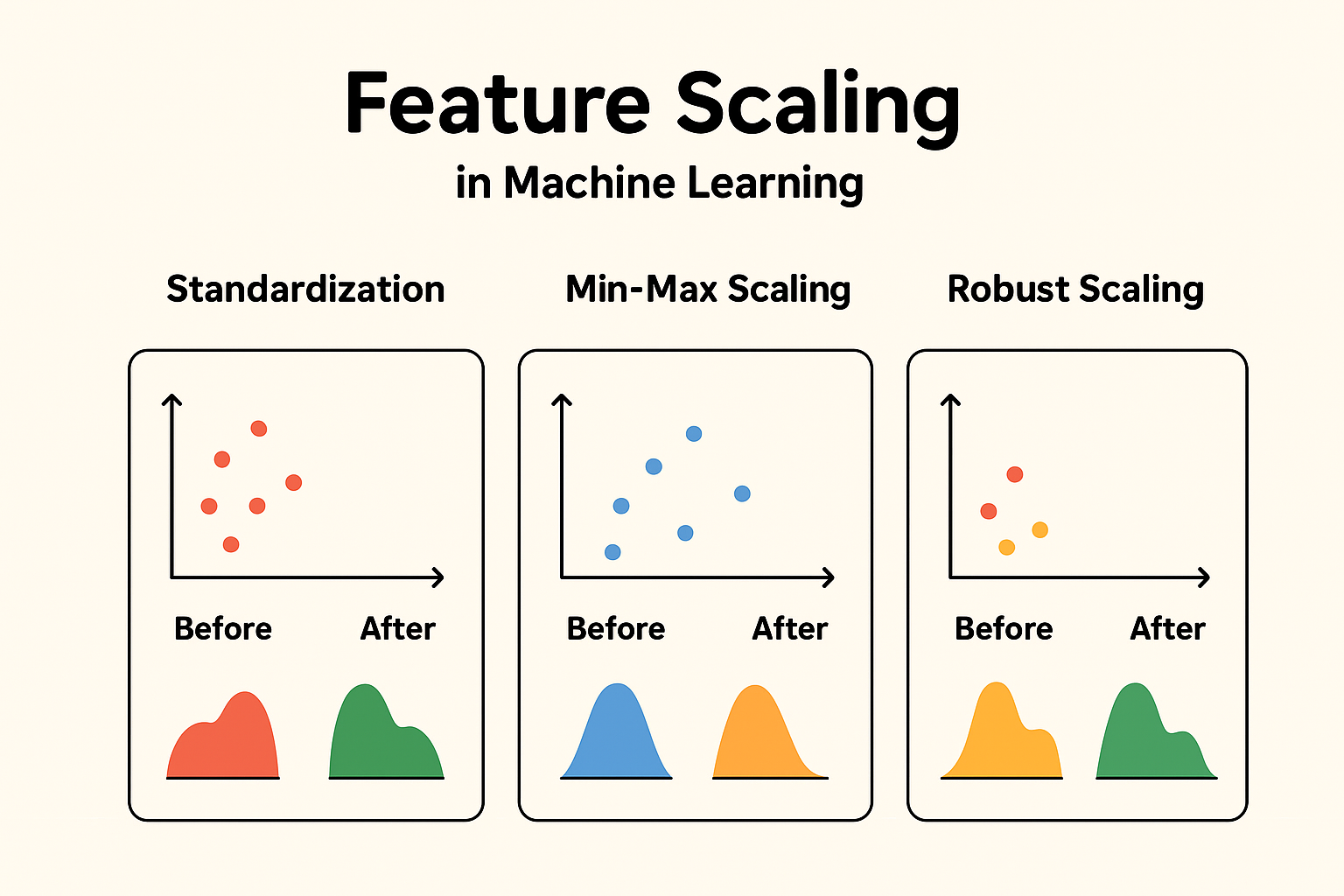🧑🏫 1. What Are Missing Values?
Imagine you’re conducting a survey in your city to collect information like:
- Name
- Age
- Gender
- Monthly Income
Now, suppose some people didn’t fill out the “Income” section, or the data entry system missed it.
That blank space is called a missing value.
In simple words:
Missing values are empty spaces in your data where information is supposed to be, but it’s not available.
📊 In a dataset, it usually looks like this:
Name Age Income Ali 25 NaN (missing) Sara 30 80,000 Bilal 22 NaN (missing)
🤔 2. Why Should We Handle Missing Values in Data Science & ML?
Great question! Let’s see why we care about these empty spaces:
🚫 1. Machine Learning Hates Missing Data
ML algorithms like Logistic Regression, SVM, and Random Forest will crash if they see NaN.
They say:
“I need clean input — not blanks!”
⚠️ 2. Ignoring Missing Values Can Mislead the Model
If we don’t handle missing values properly:
- The model can learn wrong patterns
- Your predictions may be biased or inaccurate
📉 3. You Lose Valuable Data
If 25% of your rows have missing values and you just delete them all, you’re wasting good information.
💡 4. Sometimes “Missing” Means Something Important
For example, if someone refuses to share their income, that might mean they’re very rich or hiding something.
You can create a feature like:
income_missing = 1 to help the model.
🔍 3. Types of Missing Values — With Real-Life Examples
There are 3 types of missing data, based on why the value is missing.
Let’s understand them with an easy-to-remember story:
✅ 1. MCAR (Missing Completely at Random)
🔍 What it means:
Missing values happened by accident, not because of the person or their income.
📘 Example:
- Your survey paper got wet in the rain 🌧️, and some “income” fields got erased.
- It doesn’t depend on the person’s age, gender, or income.
📌 Key Point:
Missing data is random and clean — you can easily handle it by dropping or filling.
🧠 Think: “It just got lost randomly. No bias. Lucky!”
✅ 2. MAR (Missing At Random)
🔍 What it means:
Missing depends on some other variable that you do know.
📘 Example:
- Younger people (age < 25) don’t like to share their income(may be they have no job yet.
- But older people fill it.
- So income is missing, but it depends on age (which you have).
📌 Key Point:
Missing is not random, but you have clues (like age) to handle it.
🧠 Think: “It depends on another question that was filled correctly.”
🔁 Let’s Revisit the Example
Let’s say we have this simple data:
| Name | Age | Income |
|---|---|---|
| Ali | 22 | NaN |
| Sara | 23 | NaN |
| Bilal | 35 | 80,000 |
| Ayesha | 40 | 90,000 |
| Umar | 38 | 85,000 |
💭 Case 1: If the missing incomes (NaNs) are for random ages:
→ like age 22 and age 38 both missing
→ and there’s no pattern
👉 Then it’s MCAR
(Maybe erased by water, or system glitch — no pattern)
💭 Case 2: If the missing incomes are only in younger people:
→ age < 25 → missing
→ age > 25 → present
👉 Then it’s MAR
(Because missingness depends on another column: age)
✅ 3. MNAR (Missing Not At Random)
🔍 What it means:
Missing depends on the same value that is missing.
📘 Example:
- People who earn too much don’t want to show their income.
- They leave it blank to hide it.
- So income is missing BECAUSE of income itself.
📌 Key Point:
This is dangerous — the missingness is inside the data you don’t see.
🧠 Think: “I can’t see the value, and it’s missing because of itself — that’s tricky!”
🧠 Summary in One Line Each:
| Type | Real Meaning | Real Example |
|---|---|---|
| MCAR | Missing randomly | Paper got wet, some data erased |
| MAR | Missing depends on other answers | Young people skipped income |
| MNAR | Missing because of its own value | Rich people hide their income |
❓ 4. Why It’s Important to Detect the Type of Missingness?
Detecting the type of missing data is critical because:
| Type | Handling Strategy | Danger of Ignoring |
|---|---|---|
| MCAR | Safe to drop or impute | Low |
| MAR | Needs imputation using other variables | Moderate |
| MNAR | Requires domain logic, hard to fix | High Risk |
If you don’t detect the type:
- You may choose the wrong technique
- Your model may become biased
- Your accuracy or fairness may drop
🔍 For example:
- Treating MNAR as MAR → adds bias
- Assuming MCAR blindly → may destroy subtle patterns
🧪 5. How to Detect the Type of Missingness?
Let’s now play detective 🕵️ — here’s how we investigate:



❗ MNAR is Hard to Detect
Because it depends on the value you don’t see, you need:
- Domain knowledge
- Business logic
🧠 Tip: If nothing explains the missingness and the column is sensitive (like income or health), assume MNAR.
🧠 Final Thoughts
| Type | Short Meaning | Detectable? | How to Handle |
|---|---|---|---|
| MCAR | Random | ✅ Easy | Drop or mean impute |
| MAR | Related to other columns | ✅ Use logic or regression | KNN, MICE, etc. |
| MNAR | Missing because of itself | ❌ Hard | Domain knowledge, flag, careful modeling |
🔜 What’s Next?
In the next blog, we’ll go hands-on with how to handle missing values using Python:
- 🧮 SimpleImputer (mean, median, mode)
- 🔍 MissingIndicator
- 🧠 KNN Imputer
- 🔁 MICE (Multivariate Imputation by Chained Equations)
Stay tuned — I’ll not only explain how to use them, but also when to use which one like a real Data Scientist.












